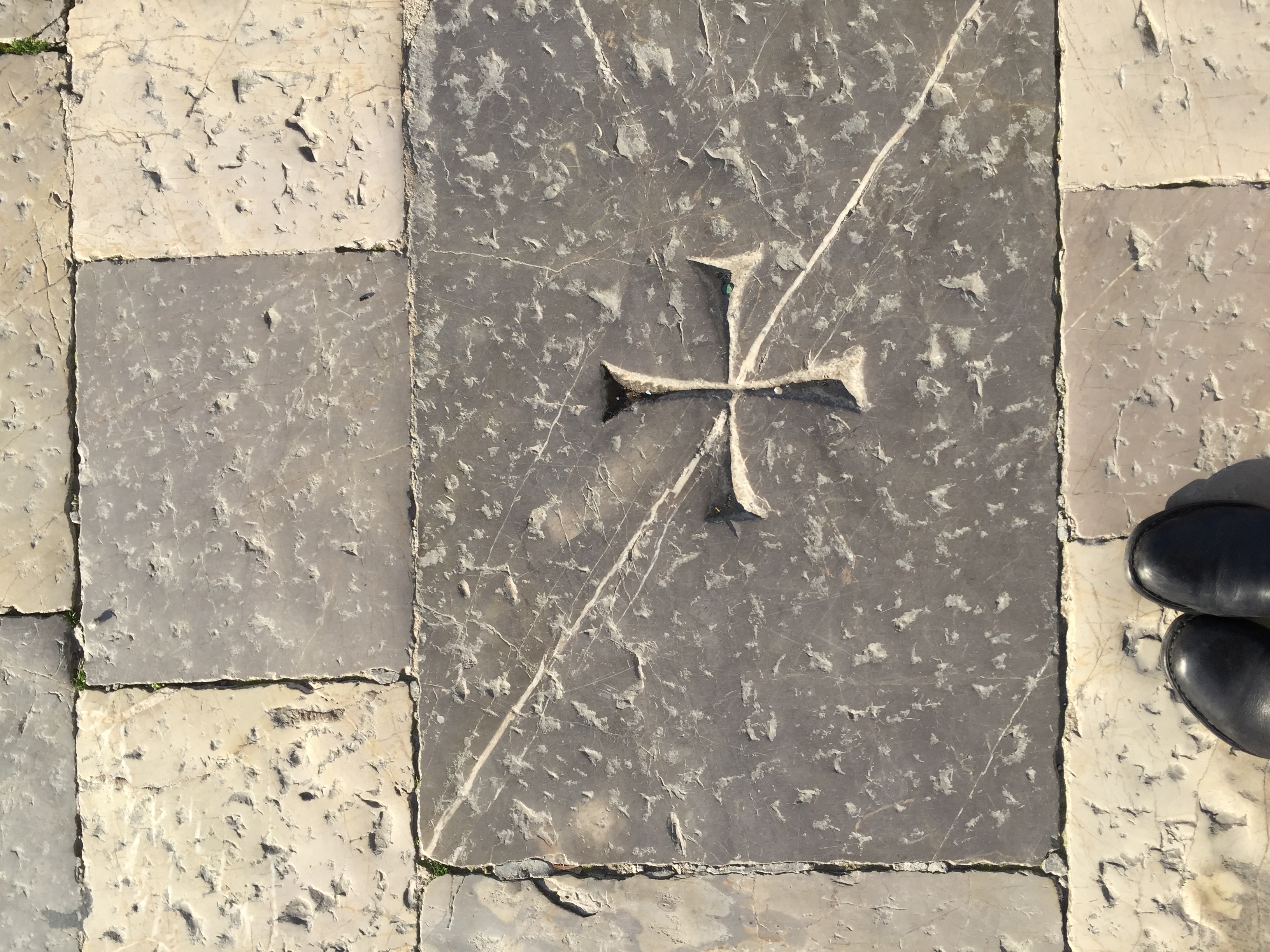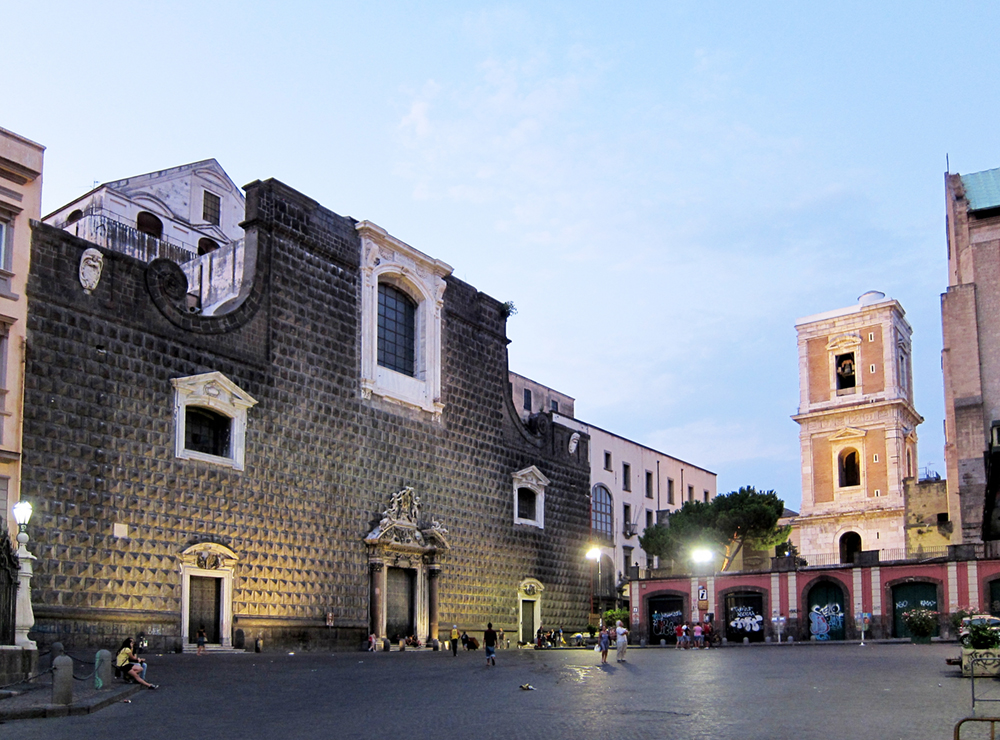During our excursion in Pisa today, one of the students asked me why there were triangles carved into some of the paving stones in the Campo dei Miracoli. I had no ready answer for her, so I went back later to walk around and look more carefully.
These are the symbols or letterforms that I found carved into the pavement:
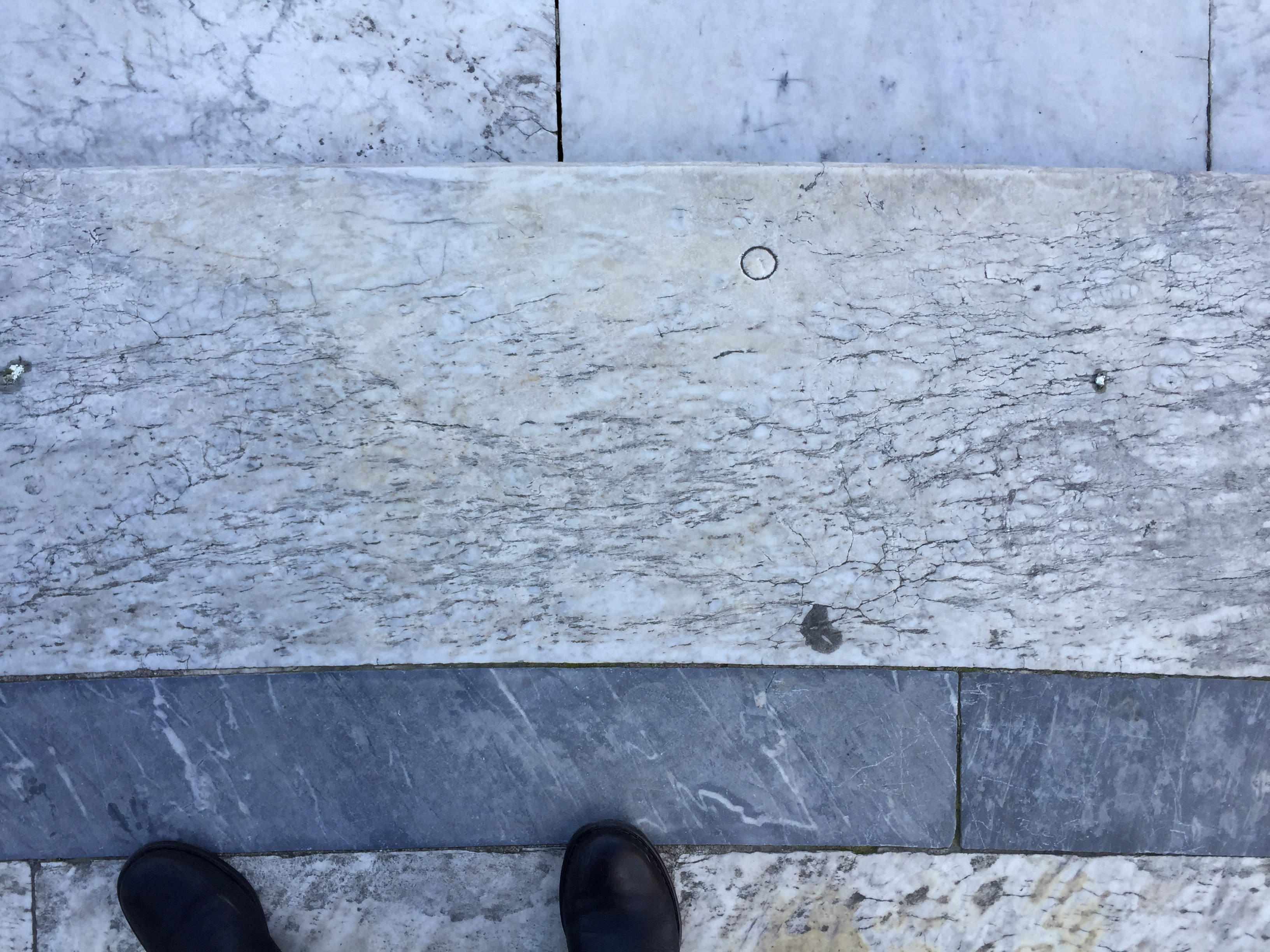
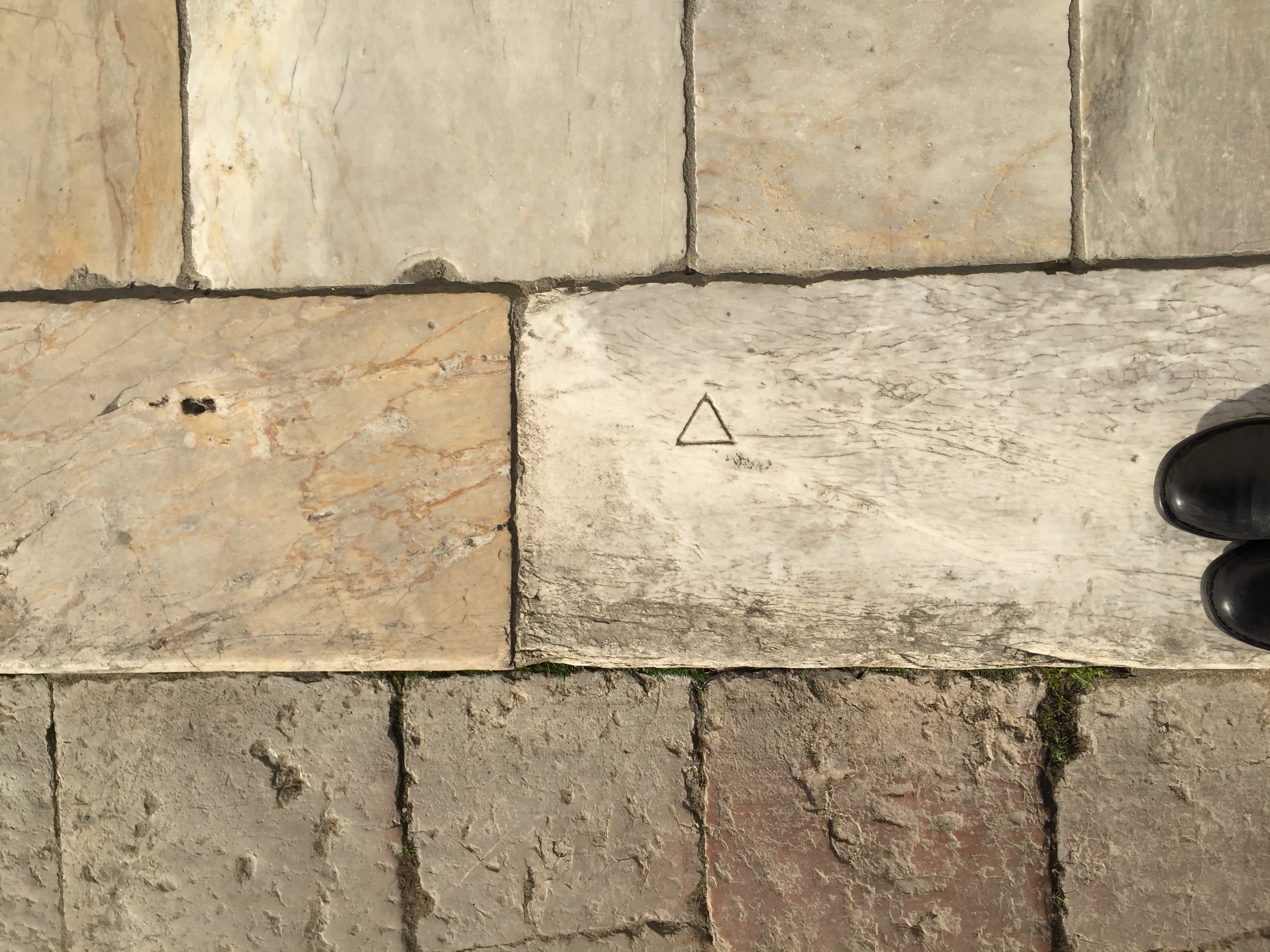
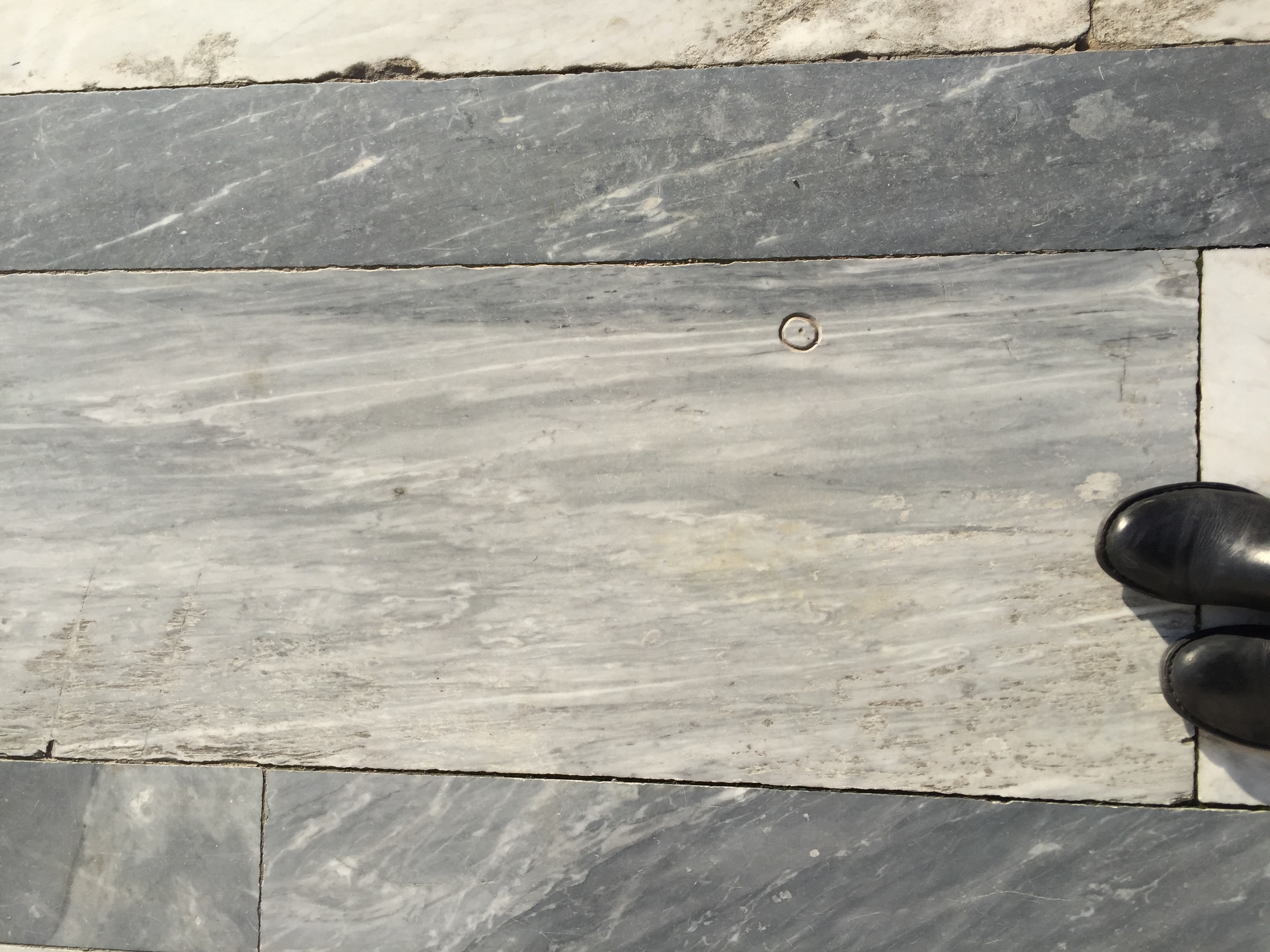
There may be even more, but these are the ones I found in the little time I had today to look for them. The two circular symbols are located in the marble that surrounds the Duomo, while the triangle is carved into a slab of marble in the pavement running alongside the Camposanto.
What could these symbols be? Some possibilities:
Location or measurement markings, such as for a meridian? But they’re not regularly placed, nor spaced evenly.
Codes used by the stonemasons when producing the blocks, to assist in their placement? This theory came to my mind because it is also one theory put forth to explain the strange symbols on the bugne on the facade of the Chiesa del Gesù Nuovo in Naples:
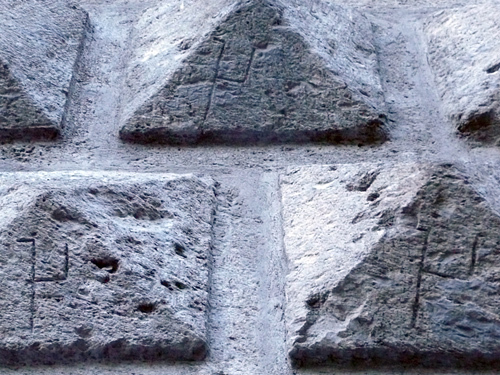
Yet in Pisa, the blocks with symbols are merely paving stones, which I doubt needed the most precise placement.
My third theory seems more likely: that the letterforms on those marble blocks were leftover from the blocks’ former lives as Roman or early Christian inscriptions. While walking around the Duomo, I found evidence that many of the marble pieces used in the building had been re-used:
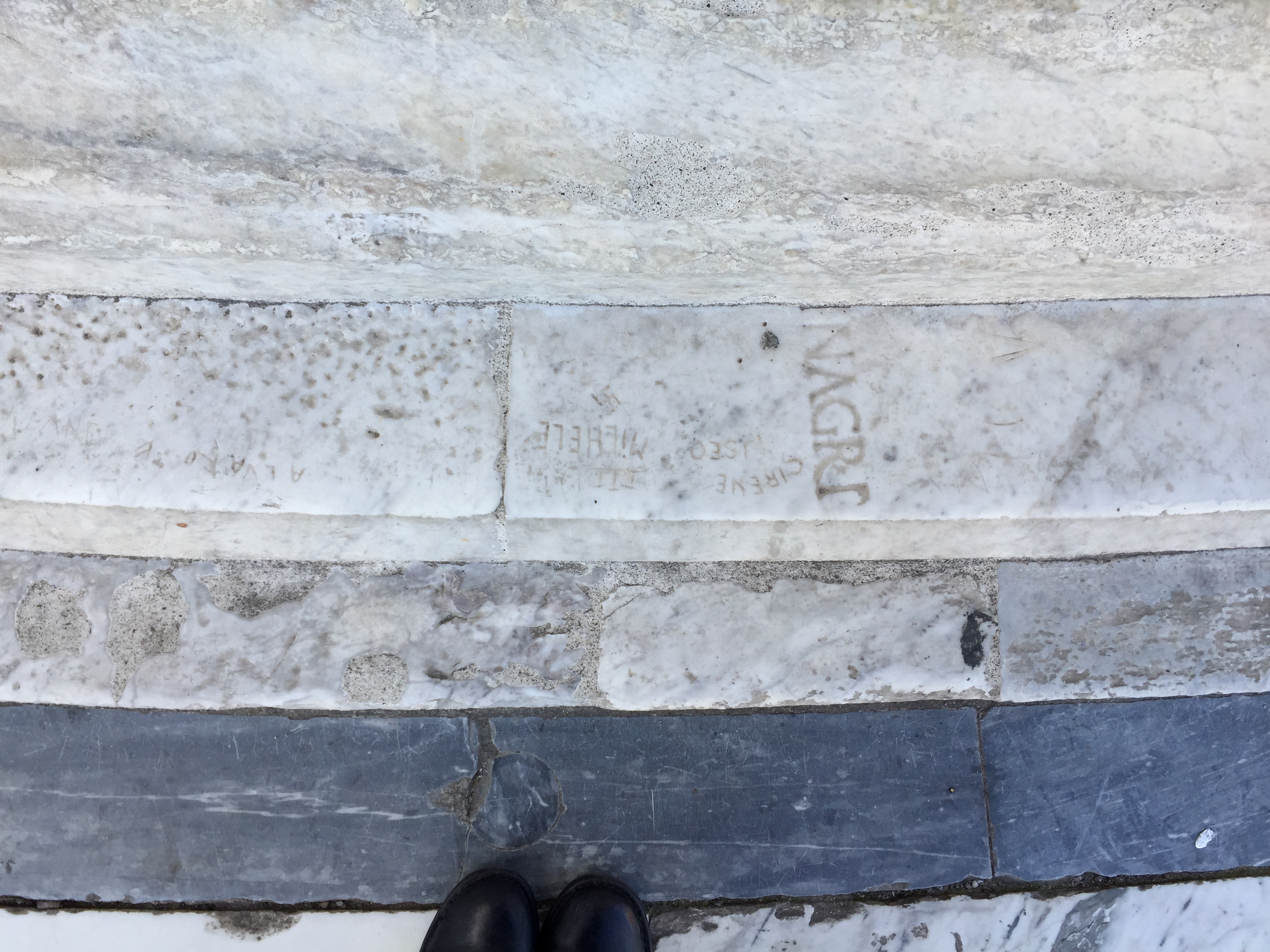
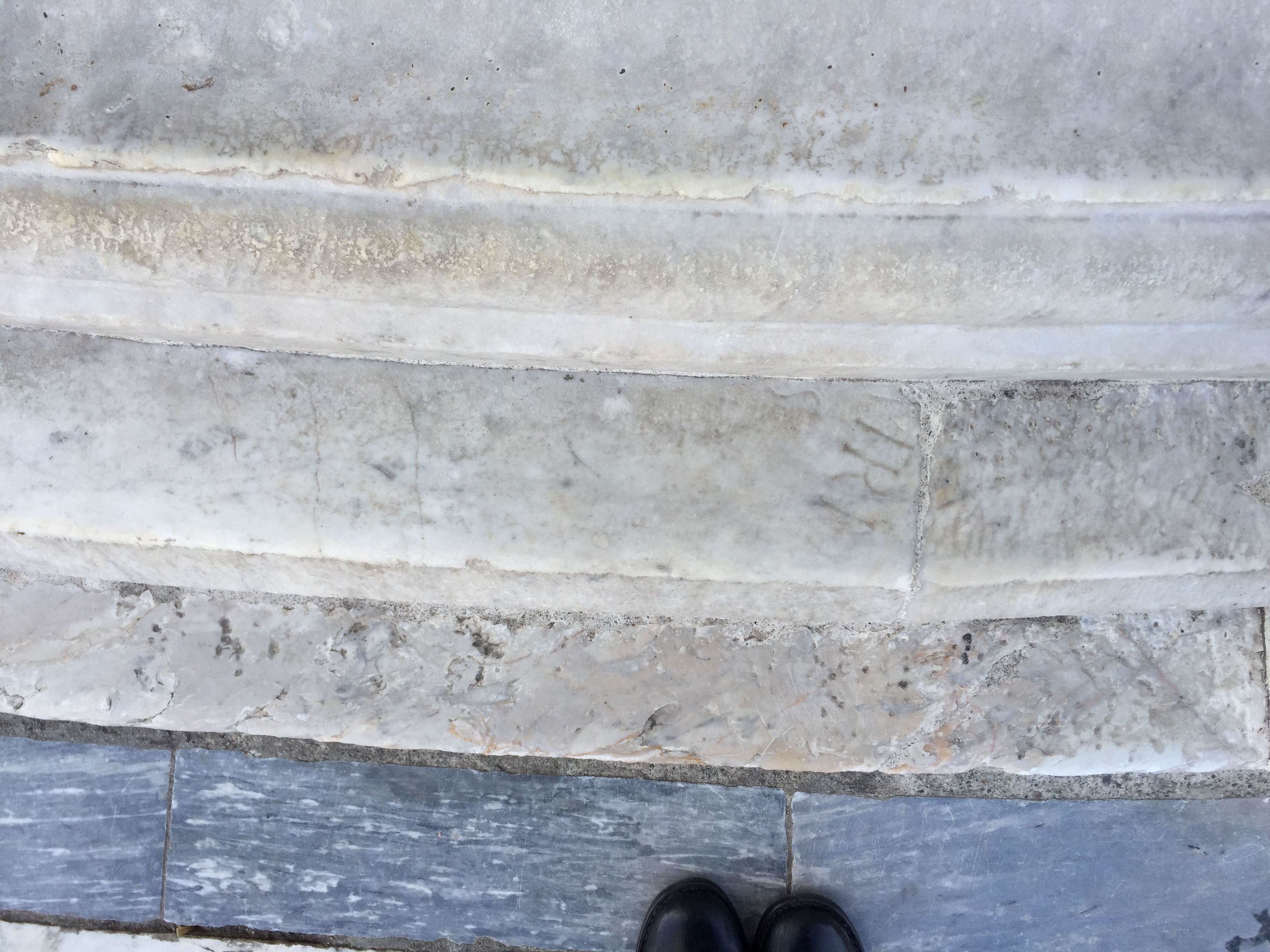
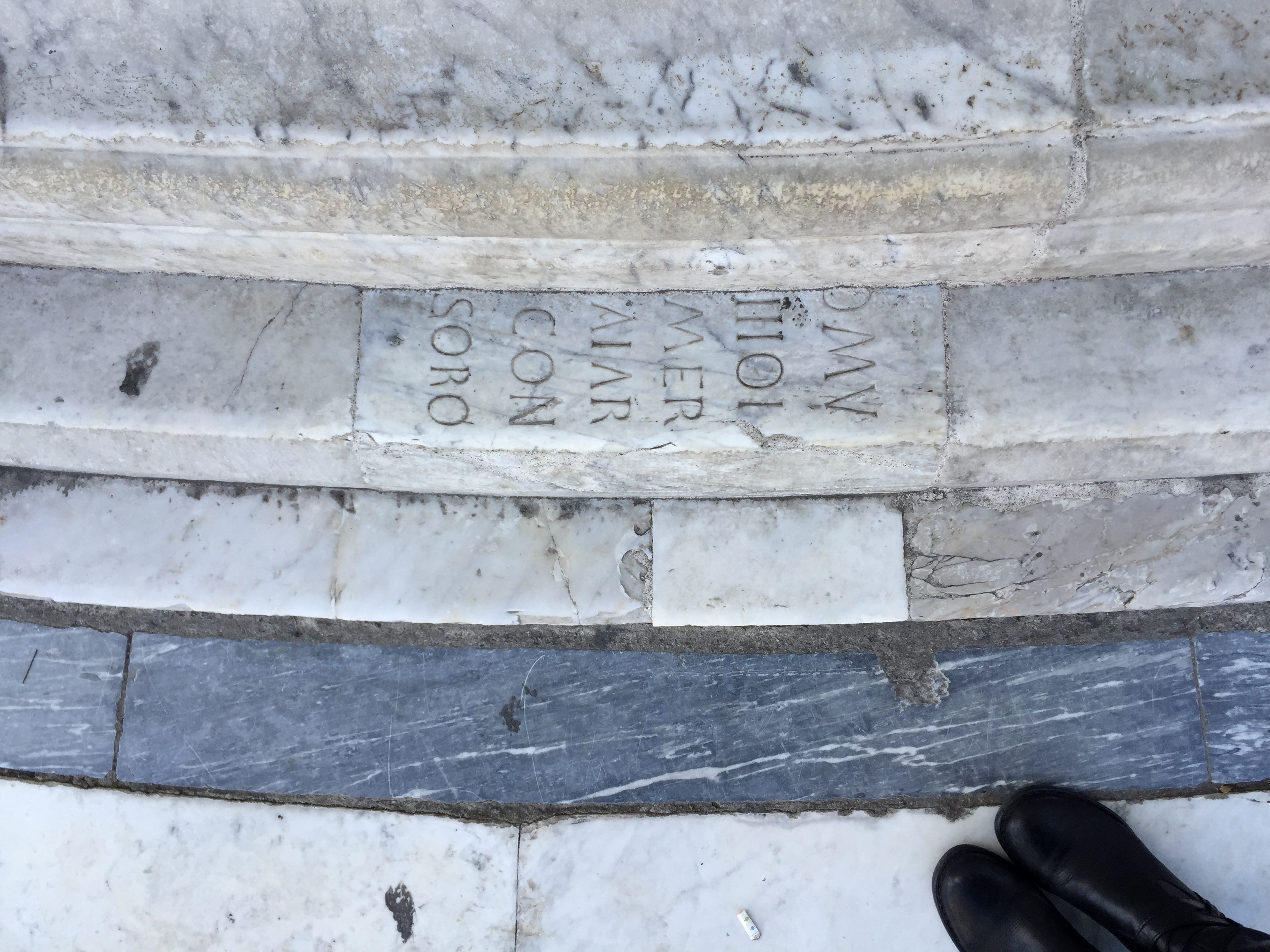
(Feet included for scale and orientation.)
My final theory is that the letterforms are simply ancient graffiti. All along the base of the Duomo’s exterior, I found carved names that might have been nothing more than the attempts of individuals in the Middle Ages to satisfy their desire to leave their permanent mark on the world:
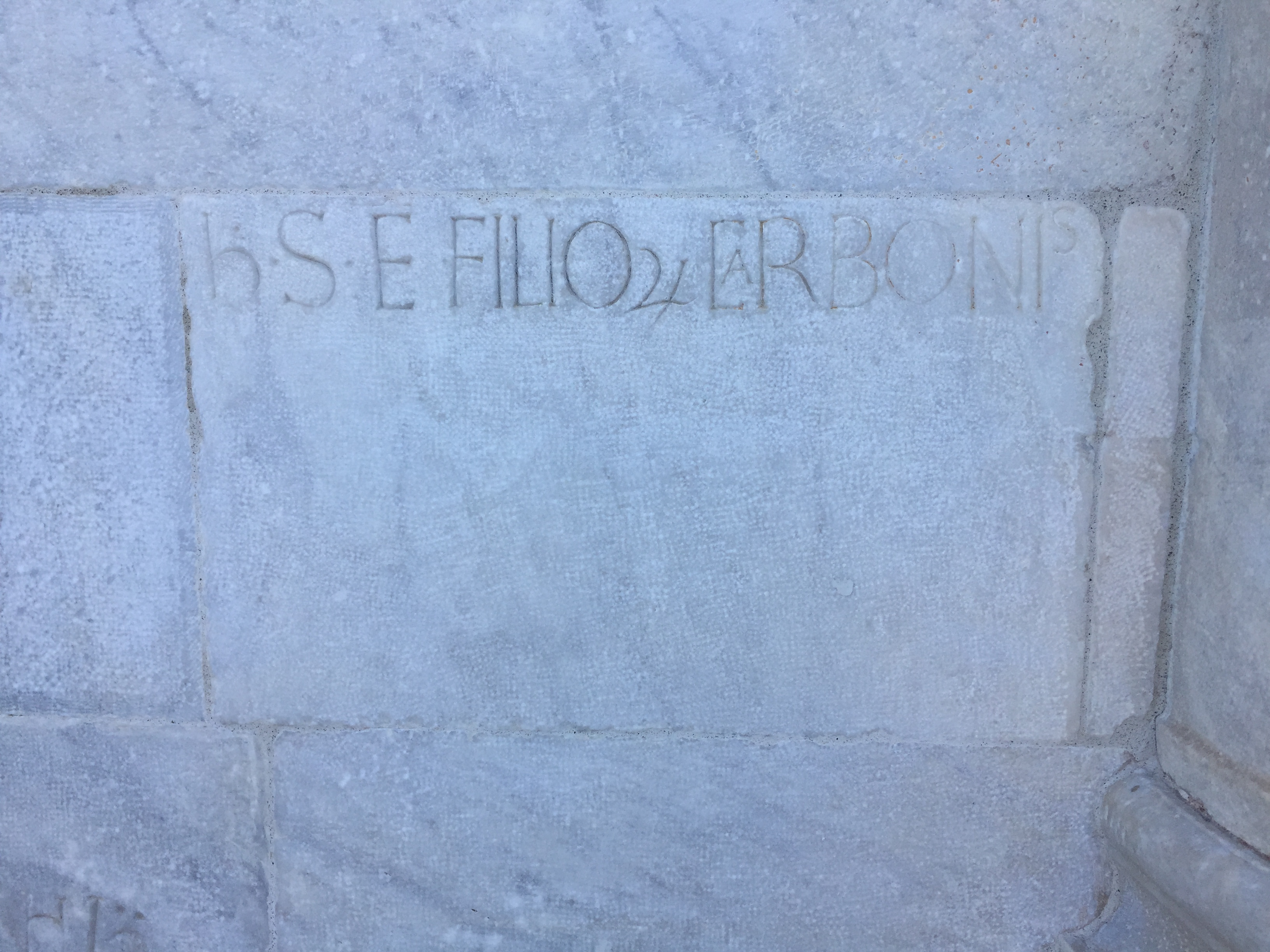
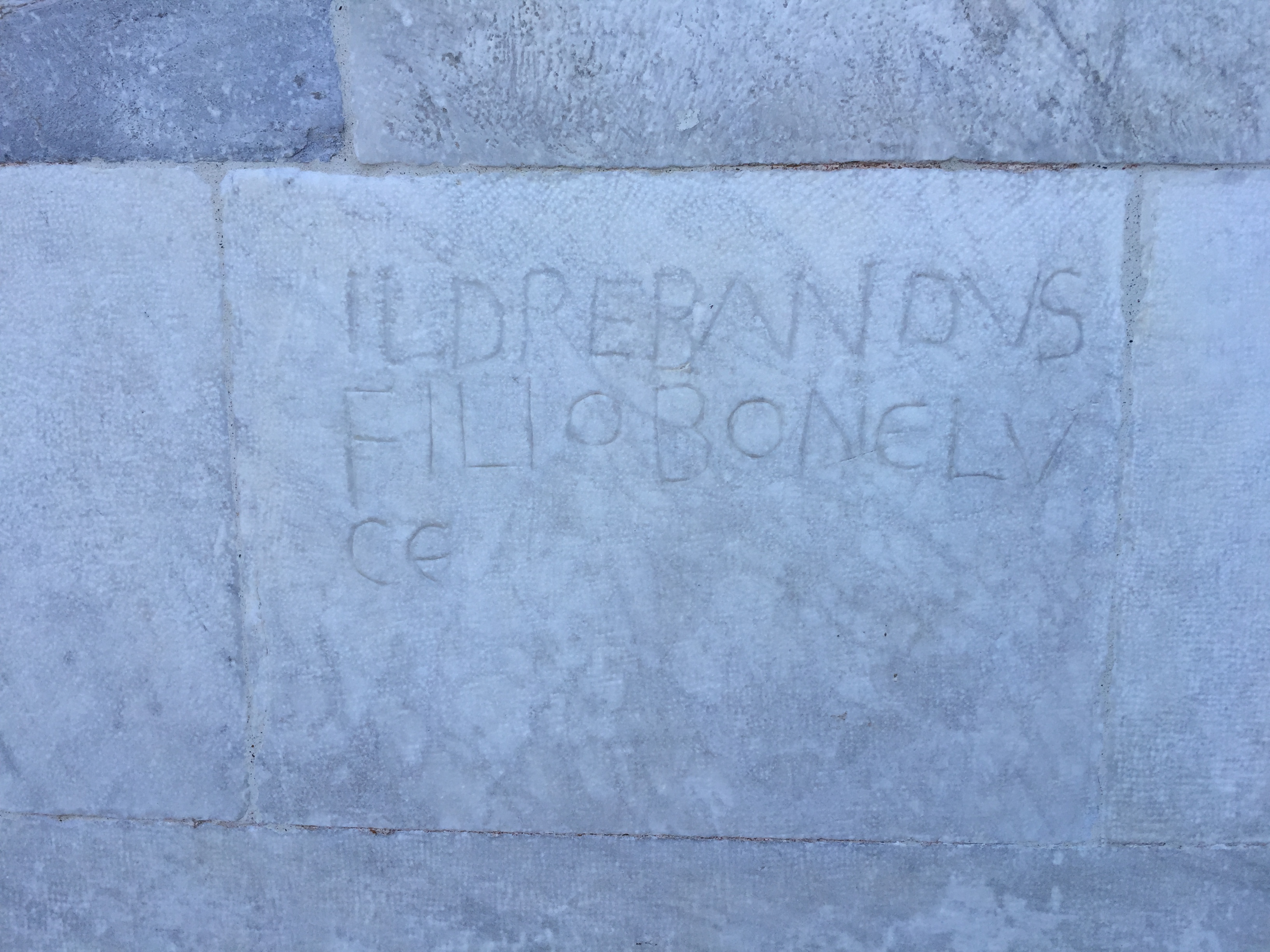
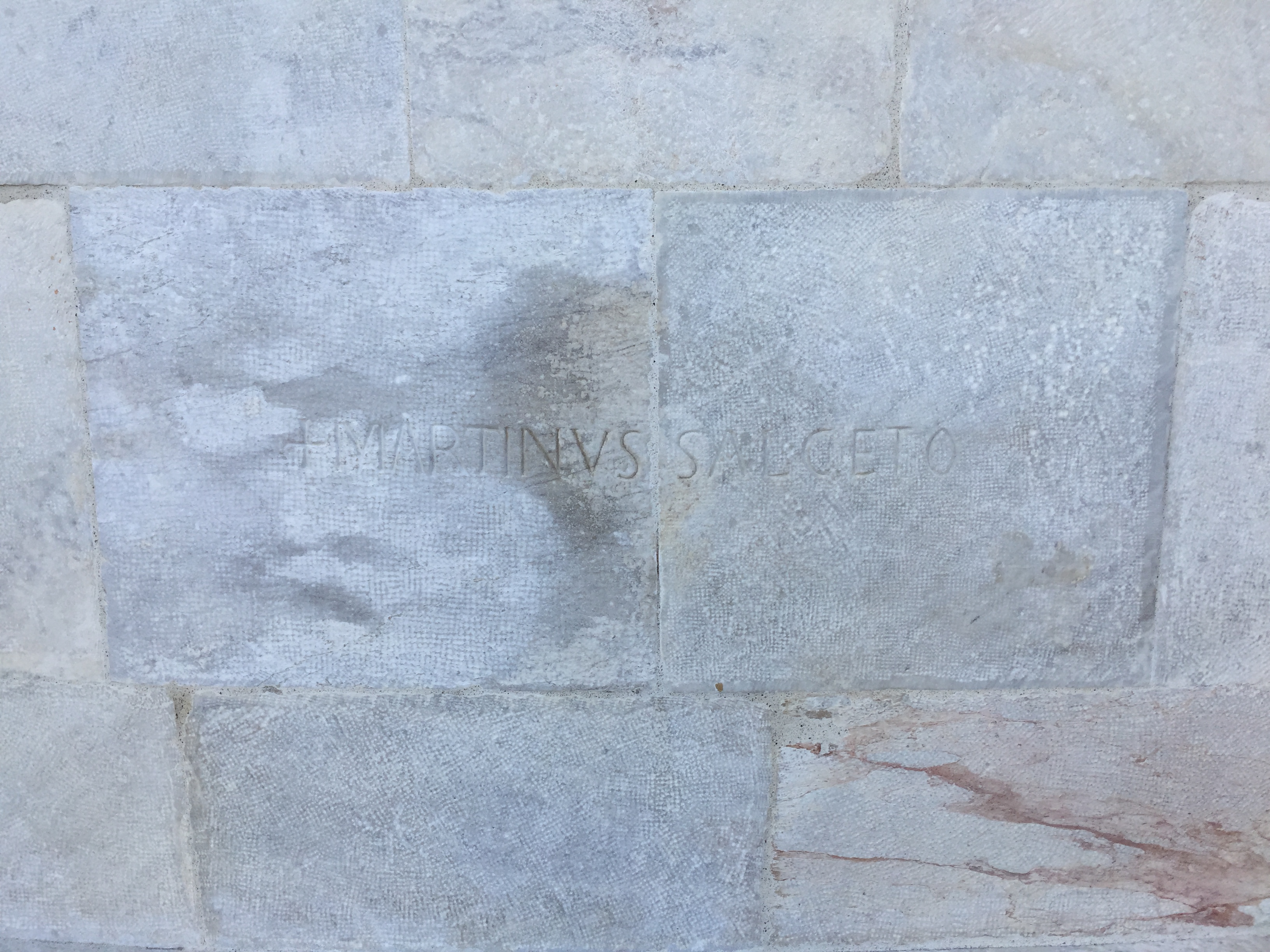
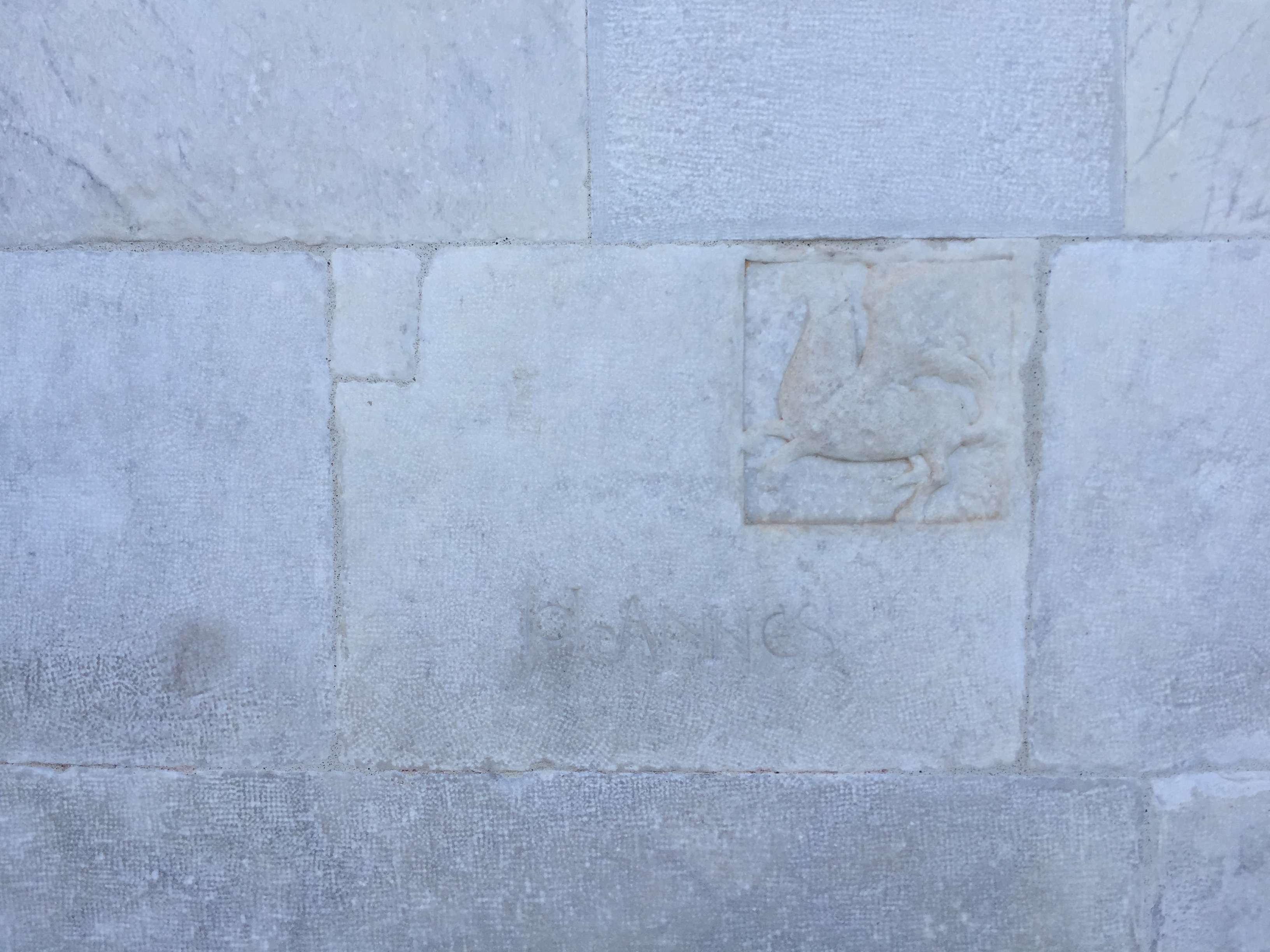
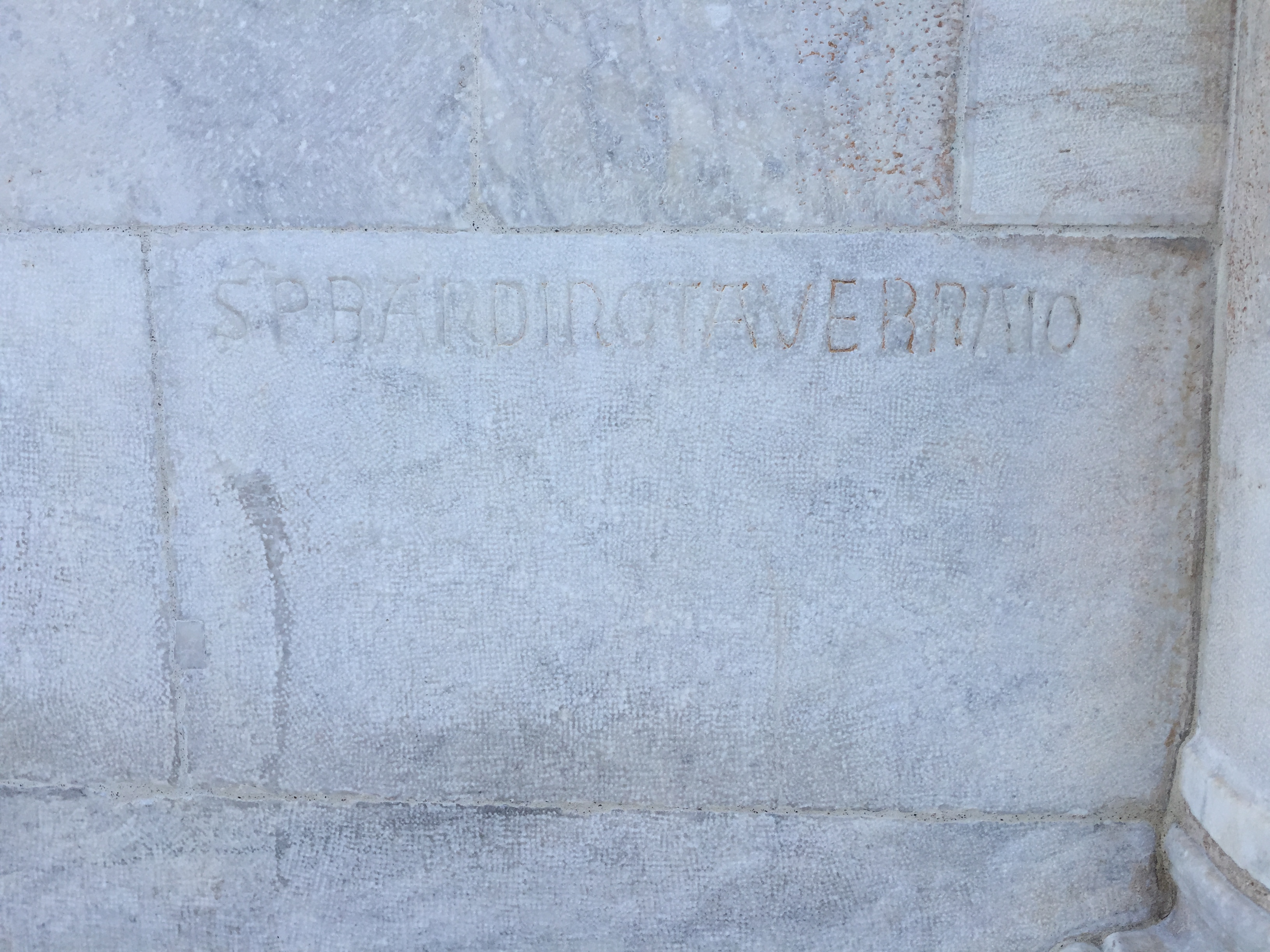
Beyond these theories, I’m out of ideas. If anyone out there has anything to contribute, please leave a comment!
This one, located in the pavement of the walk approaching the facade of the Duomo in Pisa, was easy to identify: the cross of the Knights of St. Stephen, the Roman Catholic military order that had its headquarters in Pisa.
